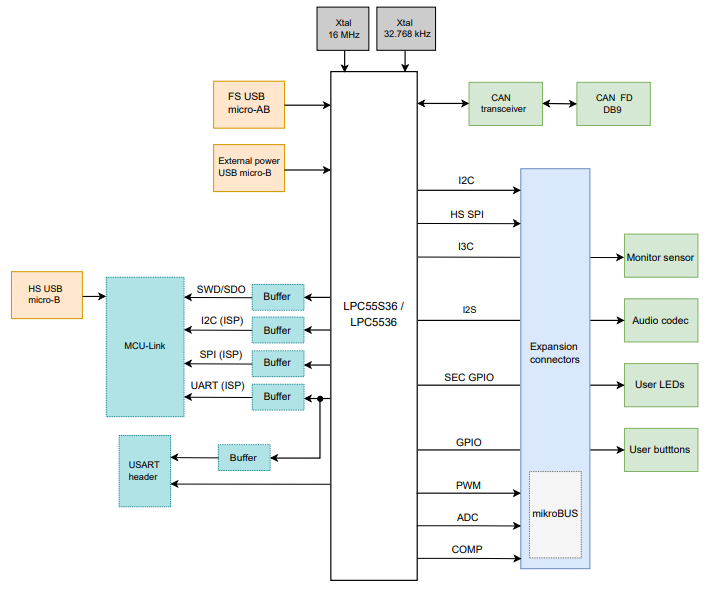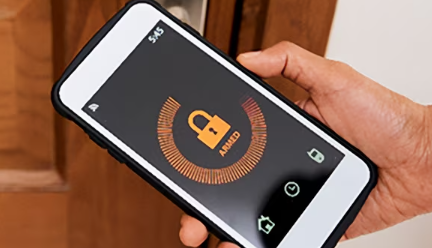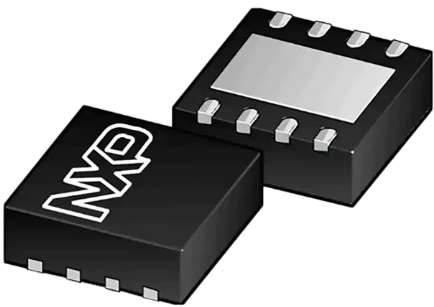- Ameya360 Component Supply Platform >
- Trade news >
- NXP:Raising the Bar in Security and Performance for Automotive Bluetooth® Low Energy
NXP:Raising the Bar in Security and Performance for Automotive Bluetooth® Low Energy
NXP:Bluetooth Low Energy (BLE) , with its cost-effective, low-power infrastructure and its ubiquitous availability in smartphones, has become an important tool for car makers. Over the past several years, what started as a way to give drivers a better way to make voice calls, send texts and stream music, has penetrated deeper into the vehicle architecture, serving to replace legacy technologies, increase efficiency and add convenience.
For example, BLE can be used as an alternative to traditional LIN and CAN networks, replacing heavy cables with wireless connectivity. In hybrid and all-electric vehicles, BLE can be used to send temperature and voltage data from battery packs to the main vehicle computer, as part of battery management systems. In the infotainment system, BLE can increase efficiency, by using duty cycling to put other, more power-intensive communication formats—such as cellular or Wi-Fi—in sleep mode when not in use. BLE also gives tire pressure monitoring systems (TPMS) the ability to send notifications to your smartphone when the tires need air and can let you check tire pressure using an app instead of fiddling with a mechanical gauge.
BLE for Smart Car Access
Of the many ways that BLE can benefit automotive, few promise to improve the end-user experience more than BLE’s integration into smart access systems, where a BLE-enabled key fob or smartphone enables handsfree control of the car’s door locks and ignition along with digital-key car sharing capability.
Handsfree access has been around for a while, but newer formats, based on a combination of BLE and ultra-wideband (UWB) , are much more secure and far less vulnerable to the relay attacks that have plagued earlier versions of remote access.
These newly defined digital keys go beyond traditional key fobs, extending the usual features of locking and unlocking the car, opening the windows or starting the engine, to provide full control over the access rights to the car. Vehicle owners can share access among family and friends, no matter the physical distance, and can grant certain rights, ranging from access only to the car’s trunk to full driving capability.
Using wireless protocols such as BLE and UWB for localization, digital key standards let you access your car without having to fish your phone out of your pocket or bag, and without having to open an app. Presence alone is all that’s needed to unlock or lock doors and start the engine.
The Car Connectivity Consortium (CCC), for example, is a cross-industry organization, focused on smartphone-to-car connectivity solutions, that has defined a standard that enables mobile devices to securely store, authenticate and share digital keys for vehicles. The CCC’s Digital Key release 3.0 specification, released in 2021, adds BLE and UWB functional requirements for secure car access (NXP is a CCC board member and helped define the Digital Key 3.0 specification).
Beyond the CCC, other standard bodies, such the Asia-Pacific Connected Vehicles Industry Association (ICCE) and the Smart Car Association Open Alliance (ICCOA), have proposed digital-key standards that use a combination of BLE and UWB.
Taking Automotive BLE to The Next Level
As a leading supplier of BLE solutions, NXP has played a key role in helping to add BLE to vehicles. In particular, our broad portfolio of BLE-enabled MCUs is designed specifically for automotive use. Most recently, we’ve introduced the KW45, a third-generation device that delivers an unmatched combination of security, flexibility, upgradability and performance.
Building on the success of the KW3x, the KW45 offers a three-core architecture that includes a 96-MHz CM33 application core a dedicated CM3 64-MHz radio core, and an isolated EdgeLock Secure Enclave.
Use this block diagram to see the interaction between the three cores in the KW45.
App core: 1 MB of Flash and 128 kB of RAM to support advanced automotive applications, including communication over CAN, using an integrated FlexCAN module, as well as support for AutoSAR applications.
Radio subsystem: Upgradeable Bluetooth 5.3 compliant, channel sounding-capable radio core with 256 kB of Flash memory and up to 88 kB of RAM.
EdgeLock Secure Enclave: Isolated core with advanced security features such as secure lifecycle management, key-store operations and hardware-accelerated cryptographic functionality.
By dividing responsibilities between application, radio and security cores, the KW45 ensures that connected automotive applications have the resources, upgradability and integration to evolve with changing standards and design requirements.
Discover NXP's advanced Bluetooth solutions for Automotive, IoT and Industrial.
The KW45’s advanced hardware is supported by a suite of software-enablement tools that target important automotive applications, including car sharing, sensors, wireless on-board diagnostics functions and, of course, CCC Digital Key 3.0 for secure car access. The KW45 is also the first to offer MCAL Drivers and a complex device driver for BLE enabling AutoSAR-compliant solutions.
KW45 for Digital Key
The KW45 is designed to meet the advanced security requirements of Digital Key 3.0. The KW45’s EdgeLock Secure Enclave enables secure trust provisioning and secure firmware updates, security lifecycle management and other security tasks associated with secure access. For Digital Key 3.0, the KW45 enables BLE with end-to-end security, so communications between the phone’s Secure Element and the car’s Secure Element are always protected.
As part of a Digital Key 3.0 solution, along with NXP’s Secure Elements and NFC product families, the KW45 works seamlessly with NXP’s Trimension SR106, the industry’s first single-chip solution to combine UWB ranging and radar. Together, the KW45 and SR106 create a single-supplier solution that simplifies the design of Digital Key features. At the same time, the SR106 can do double duty, supporting in-cabin radar, as part of occupant-safety systems now being mandated in Europe, the US and elsewhere.
KW45 for AUTOSTAR-Certified ECUs
To streamline the development of automotive software and enable quick AUTOSAR certification for electronic control units (ECUs), the KW45 includes an NXP MCAL drivers, which maps all the on-chip MCU peripheral modules and external devices to memory, and makes the upper software layer independent of the MCU. KW45's MCAL driver package includes a complex device driver (CDD) for BLE. The KW45 can also be combined with NXP’s SBC offerings, for a streamlined, single-supplier solution for a broad range of ECU applications.
KW45 for Future-Proof Development
Using a Flash-based software core for radio operation adds a remarkable amount of flexibility and longevity to the design. The KW45 can evolve as BLE evolves, so vehicles can interface with smartphones today, tomorrow and for years to come—without expensive, time-consuming hardware upgrades or redesigns.
Near-field communication (NFC) provides the backup entry for access when a smartphone runs out of power. Altogether, these smart technologies function collectively to give users a seamless experience.
Online messageinquiry
- Week of hot material
- Material in short supply seckilling
| model | brand | Quote |
|---|---|---|
| TL431ACLPR | Texas Instruments | |
| BD71847AMWV-E2 | ROHM Semiconductor | |
| RB751G-40T2R | ROHM Semiconductor | |
| CDZVT2R20B | ROHM Semiconductor | |
| MC33074DR2G | onsemi |
| model | brand | To snap up |
|---|---|---|
| BU33JA2MNVX-CTL | ROHM Semiconductor | |
| TPS63050YFFR | Texas Instruments | |
| BP3621 | ROHM Semiconductor | |
| STM32F429IGT6 | STMicroelectronics | |
| IPZ40N04S5L4R8ATMA1 | Infineon Technologies | |
| ESR03EZPJ151 | ROHM Semiconductor |
- Week of ranking
- Month ranking
Qr code of ameya360 official account
Identify TWO-DIMENSIONAL code, you can pay attention to


Please enter the verification code in the image below:



























